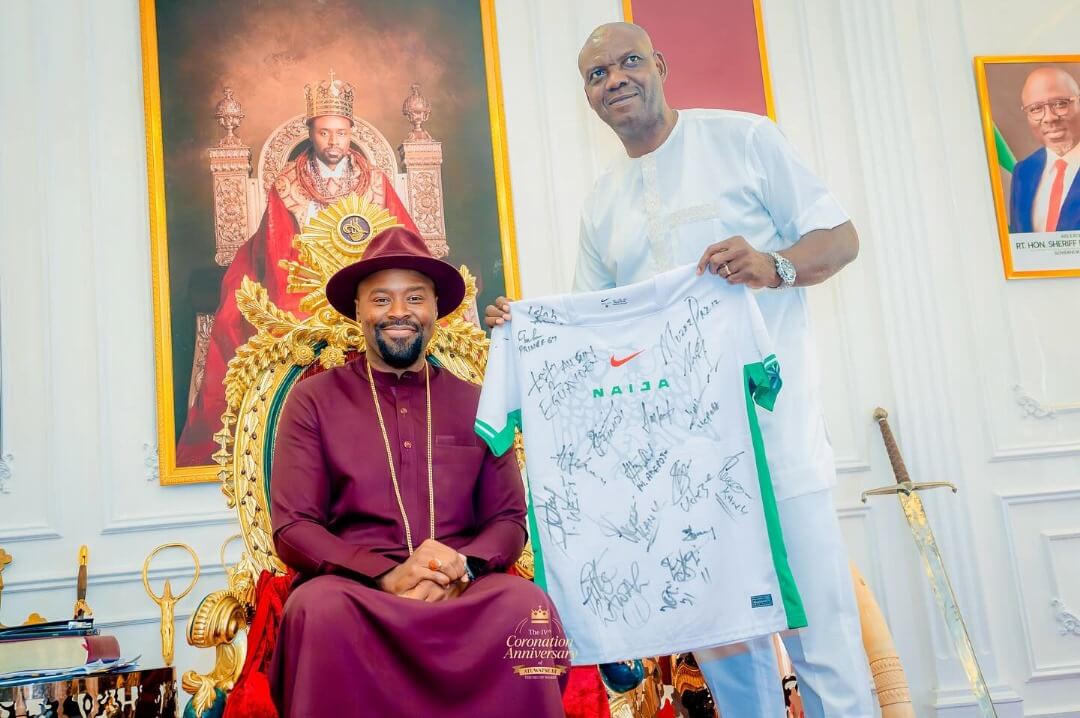- Judith Akatugba
- 0 Comments
- 733 Views
It goes without saying that we are addressing these issues from the perspective of the classic menswear group. However, this is not an article meant to belittle or disparage fashion. Rather, our primary concern was really determining the differences between the two. As a result, in order to maintain the conversation, we will need to use certain generalizations to outline our ideas.
Read Also: 10 AI Innovations Transforming the Auto Industry
Our Definition of Fashion and Style
Because of its originality, inventiveness, and cultural significance, fashion is a noticeable and highly regarded manner of wearing.
Style is a unique sense of dressing that accentuates the individual’s sense of style while projecting confidence and remaining universally appealing. We can expand on this description by pointing out that: Classic style is based on tried-and-true aesthetic principles and encompasses all facets of style in general.
In the end, we definitely see the usefulness of both approaches to menswear, regardless of whether you consider yourself a devotee of fashion or style as a matter of personal choice. Still, we favor a style-based strategy.
Of course, there have been positive instances where the two have come together, such as when tab collars, an essential component of classic fashion, unexpectedly became fashionable after the publication of the James Bond movie Skyfall. Additionally, a lot of guys who had previously only worn tab collars because they were in trend were now abruptly exposed to the wider realm of traditional fashion.
In the end, our assertions are our well-informed opinions, and not all of them are meant to be absolutes. Our goal is to set up evaluations that are equitable for all parties and will spark some fascinating debate.
1. Fashion is temporary, while style is (practically) timeless.
The adage “Fashion fades, style is eternal” by Yves Saint Laurent should definitely be the first thing you say while discussing this subject. Because fashion is frequently valued exactly because it is fresh and unusual, it changes regularly and typically arbitrarily.
Even yet, certain trends could last longer than others. Any trend that endures long enough will eventually get dated and eventually out of style.
However, style does not have an expiration date; elements of style that are generally useful and effective can be preserved and even taken up by others. For example, classic style is the culmination of all the wisdom that men of classic style have accumulated over decades.
Because fashion is always looking for something new, it is less able to benefit from this storehouse of expertise. It would be kind of an oxymoron to wear classic fashion. Of course, fashion changes with time. In 2020, what was fashionable in 1220 might not be so in 2020. However, the more basic cultural standards of what makes for attractive clothes—such as superb fit, tasteful color schemes, and high-quality materials—can last remarkably long.
After all, a lot of the fashion advice that early 19th-century menswear influencer Beau Brummell provided is still relevant today.
2. Fashion is impersonal, while style is personal.
Unless you’re the trendsetter, following a certain fashion typically means dressing in cuts, styles, or hues that you may not find flattering on yourself. Originally, fashionable apparel was created and imagined for someone else.
As Preston explains in our Modern Style guide, most modern trends are created with a certain body type in mind, yet many diverse people end up wearing those stylish garments. This has now homogenized everyone’s appearance.
Therefore, in order to effectively look like everyone else, fashion urges its consumers to put on clothing that were probably made for someone else. However, the key to style is putting together an ensemble that flatters you and appeals to others at the same time. Style affixes certain general aesthetic principles to your physical attributes and sense of self.
The distinctive elements—your preferred textures, colors, and patterns—come from you, even though the basis may be external. For example, I want a classic look, but I can make my own style unique so I don’t look like a carbon copy of other style enthusiasts.
In essence, style offers rules to assist you in creating your own unique style. The end product is apparel that not only looks well on you but also complements your body type and fits you well.
3. Fashion is dated, while style is versatile.
Clothes that were once incredibly stylish frequently become exceedingly outdated since they are typically so deeply ingrained in and associated with a specific time period. In the 1980s, oversized power suits were very popular, and if you wear one today, people will always ask you if you’re cosplaying Gordon Gekko. And who among us doesn’t become nostalgic for the 1990s and early 2000s when they see billow-leg jeans?
Therefore, trends can become victims of their own success; after becoming immensely popular in one era, they are practically impossible to wear in any other period without appearing out of date or even a bit costumey.
Conversely, style has a longer shelf life since it is based on broader ideas about what is beautiful. They are not as likely to take off like wildfire before fading into thin air.
While many of the looks prevalent in the 1940s still work now, Raphael, for example, prefers a plush, voluminous style that would have been quite at home in that decade. On the other hand, I like a sleeker, cleaner look that is very reminiscent of the 1960s. Furthermore, many 1960s fashion trends—like Peacock Revolution tailoring, for example—look like things that many guys, including myself, would be content to wear today.
Both Raphael and I adhere to the rules of classic style, yet even though our individual looks are influenced by decades-old fashions, they are sufficiently adaptable to keep us from appearing out of date or out of place.
4. Fashion is often outlandish, while style is usually subtle.
Fashion frequently welcomes novel and unusual dress codes because of its ongoing drive to evolve and set itself apart. Over time, they become increasingly unusual. Just contrast today’s catwalk with that of the 1950s. After all, the chase of the new may take you to some pretty weird places once you’ve covered all the fundamental styles.
In essence, new trends are occasionally adopted simply because they’ve never been tried before rather than because they’re attractive or agreeable. An example of this is the collaboration between Burberry and Minecraft, which brought high fashion into the gaming industry. More than $500 on a tee? If I can discover that many diamonds, I’ll be digging for hours. Preston will acquaint you with further patterns in our analysis of the most disastrous men’s fashion fails of the 20th century.
Contrarily, style does not have to constantly reinvent itself; as a result, it typically gives more understated and subtle styles that highlight the wearer as a person rather than the garishness of the clothing. Although certain styles may be more extravagant or dazzling than others, styles must be versatile and appealing to a wide audience. Moderate styles tend to steer clear of the excesses of conventional fashion.
According to Cary Grant, “I’ve bought dozens of suits over the years, and they all have one thing in common: they’re mid-fashion.” That is to say, they are neither unduly conservative or outmoded nor are they overtly trendy or far out. And my own words couldn’t have been more accurate.
5. Fashion seeks convenience, while style seeks quality.
High-quality materials are not well suited to the time restrictions that come with fashion, just from a practical standpoint. Fashion items are subject to fads that can fade quickly, thus having quick access to affordable, easily available raw materials is essential to maintaining a competitive edge. Failure to do so could result in missed opportunities to make sales.
Maybe this explains why the fashion industry, particularly the fast fashion industry, has embraced synthetics so quickly. After all, plastic is the easiest material to shape to meet the newest trends. Perhaps this explains why Louis Vuitton coded a PVC bag’s unknown fabric. In our investigation into whether or not the Louis Vuitton duffel bag is worthwhile, Raphael makes an effort to unravel this mystery.
Therefore, even while fashionable clothing does not always need to be made of more affordable or practical materials, it is clear that doing so has advantages, and that the quickly shifting trends in fashion can contribute to a disposable society.
On the other hand, since style is less dependent on time, it welcomes strong, long-lasting clothing that fulfills its purpose and doesn’t need to be replaced on a regular basis because things aren’t worn out of style. Building a stylish, adaptable, high-quality wardrobe with plenty of pieces that have excellent cost-per-wear is considerably simpler.
Investing in a well-made, multipurpose suit that will last you a decade or longer is preferable to purchasing an inexpensive, trendy suit every few years.
6. Style is learned, but fashion changes quickly.
In reference to rapid fashion, shallow fashion ultimately necessitates little more than following a trend. If dressing stylishly just means throwing on a brightly colored jacket or leaving little room for creativity when wearing a body suit, then very much anyone can be stylish as long as they’re prepared to fit in and replicate what other people find most appealing.
Creating and refining your personal style is an ongoing process that may never come to a conclusion. However, style encourages you to experiment while learning from and adapting these other well-dressed men’s sartorial norms.
It takes more to be stylish than simply wearing a shirt in a specific color or with a specific logo; developing your own sense of style will result in amazing, one-of-a-kind ensembles that are far more amazing than any craze. Additionally, you may always rely on the Gentleman’s Gazette’s resources if you’re interested in traditional style.
7. Style is attainable, but fashion is hard to achieve.
Though it goes against everything we just discussed, fashion can be relatively hard to achieve even though it can be theoretically simple to adopt. A fashion-forward wardrobe would have to be updated frequently due to its ever-evolving parameters, which would require purchasing and keeping a constantly-changing assortment of clothing.
Old products that are out of style and unwearable can always be sold, but the transient nature of fashion frequently drives up prices. An example of this is when $85 Crocs were being resold for $1000. However, the moment the fad ends, the prices fall. Therefore, once an item loses its fashion value, it mostly vanishes and loses its financial value.
The emphasis on style is on gradually assembling a wardrobe that is adaptable with basic pieces like shirts, shoes, socks, and ties. They can be combined to create a wide range of looks. A fashionable approach to menswear often steers clear of any one-off pieces because style is based on generally attractive clothing that fits your personality. These are the kinds of things that don’t come around every season and purposefully have no shelf life.
Rather, each is thoughtfully chosen to fulfill a certain function in your wardrobe and is worn to its fullest potential. With our 25 Tips and Tricks for Secondhand Shopping, you can locate fashionable goods at substantial discounts in addition to obtaining a fantastic return on your investment with a good cost-per-wear ratio. The stylish products that are usually the only ones you’ll discover in vintage stores are usually the casualties of long-gone fashion trends. To be honest, we understand why.
8. Style is welcoming, but fashion is exclusive.
Something has to be unpopular for something else to be fashionable, and fashion is inherently biased toward anything that is not in style. Individuals who lack style are marginalized by fashion. Since everyone is expected by fashion to wear whatever their personal style is, those who don’t, in essence, don’t belong.
Fashion has an important Catch-22 built into it. Once a trend gains enough traction to be adopted by a significant number of individuals, it becomes too mainstream and evolves. All those who bothered to be stylish have all of a sudden become unstyleable again. On the other hand, style is independent of rivalry or others’ attempts to imitate it because of its distinct, strong individual component.
Style pushes us to make the most of our best physical assets and wear them to the fullest extent possible. As an illustration, Nathan and I tend to dress more current than Raphael and Preston, but each of us has unique style that suits us, so it’s okay if what works for me doesn’t work for Raphael.
Because that’s what style is all about—looking good in our own unique ways. In other words, technically nobody is fashionable while everyone is. However, no one has to limit the style of others in order to be stylish.











